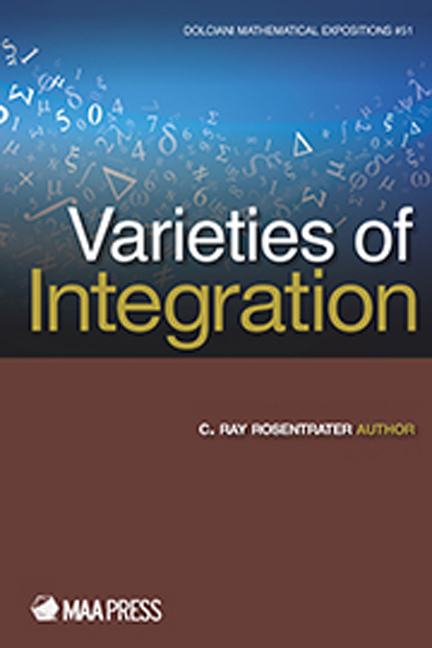Book contents
- Frontmatter
- Preface
- Contents
- 1 Historical Introduction
- 2 The Riemann Integral
- 3 The Darboux integral
- 4 A Functional zoo
- 5 Another Approach: Measure Theory
- 6 The Lebesgue Integral
- 7 The Gauge Integral
- 8 Stieltjes-type Integrals and Extensions
- 9 A Look Back
- 10 Afterword: L2 Spaces and Fourier Series
- Appendices: A Compendium of Definitions and Results
- Index
- About the Author
9 - A Look Back
- Frontmatter
- Preface
- Contents
- 1 Historical Introduction
- 2 The Riemann Integral
- 3 The Darboux integral
- 4 A Functional zoo
- 5 Another Approach: Measure Theory
- 6 The Lebesgue Integral
- 7 The Gauge Integral
- 8 Stieltjes-type Integrals and Extensions
- 9 A Look Back
- 10 Afterword: L2 Spaces and Fourier Series
- Appendices: A Compendium of Definitions and Results
- Index
- About the Author
Summary
Historically, the Riemann and Darboux integrals (and the equivalent Cauchy integral that preceded them) were introduced to solve a different set of problems than were the Lebesgue and gauge integrals. The Riemann and Darboux integrals were developed in response to foundational questions such as those identified by Bishop Berkeley (page 7). The Lebesgue and gauge integrals address issues of convergence arising from Fourier series. It should then be no great surprise that the integrals have somewhat different properties. This concluding chapter presents a comparative overview of the integrals covered in this text.
Basic approaches
Given a function f on [a,b], how do we define
Riemann integral
The Riemann integral partitions [a,b] into subintervals. Then, using tags with, the sum is computed. If all such sums approximate some fixed real number A when the subintervals in the partition are suitably controlled, the function f is integrable over [a,b] and the value of the integral is A. Specifically, given an there must be a δ > 0 such that, when all the subintervals in a partition have width less than δ, the sum must be within of A independent of the the choice of the tags. When proving results about the Riemann integral it is common to spend a significant amount of energy identifying a possible value for A. Cauchy sequences and cluster points figure prominently in this process.
Darboux Integral
Like the Riemann integral, the Darboux integral partitions [a,b] into subintervals. Instead of selecting tags, we compute the sums A function is Darboux integrable on [a,b] if
where the outer supremum and infimum are taken over all possible partitions of [a,b] by subintervals. In this case, the Darboux integral is the common value.
The Riemann and Darboux integrals are equivalent. However, proofs for the two integrals can follow quite different paths. For example, when proving theoretical results about the Darboux integral, there is no need to construct a value using Cauchy sequences or some related technique since the supremum and infimum already identify a value.
- Type
- Chapter
- Information
- Varieties of Integration , pp. 271 - 278Publisher: Mathematical Association of AmericaPrint publication year: 2015



